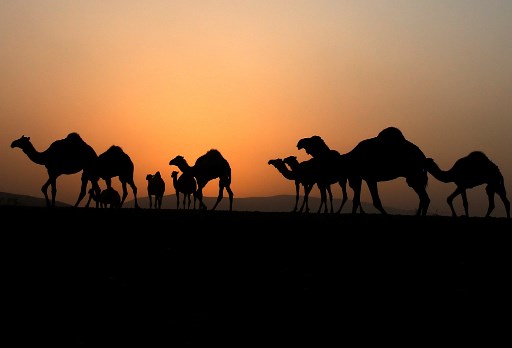

by Mariëtte Le Roux
Agence France Presse
PARIS , France (AFP) — When humans wage war, they harm more than just one another. Wild animals suffer too, and some have verged on annihilation in Africa’s many anti-colonial and civil conflicts, researchers said Wednesday.
More than 70 percent of the continent’s protected natural areas has been touched by war between 1946 and 2010, triggering a “downward spiral” for many populations of big plant-eating mammals, according to a study published in the journal Nature.
In Mozambique’s Gorongosa National Park, for example, more than 90 percent of large herbivores — including elephants, zebras, wildebeests, buffaloes, warthogs, hippos and various antelope — died in the 1964-74 struggle for liberation from Portuguese rule, and subsequent civil war.
On top of animals killed by bullets or bombs, war boosts poaching amid failing law enforcement — both for food as poverty increases, as well as for ivory, hides and other products to be sold for more weapons.
Wartime also commonly sees the collapse of government and support institutions, including those charged with running a country’s protected natural areas.
But there is cause for optimism, said Princeton University research duo Robert Pringle and Joshua Daskin.
“While wildlife populations declined in conflict areas, they rarely collapsed to the point where recovery is impossible,” they said.
Even in Gorongosa, wildlife levels have recovered to about 80 percent of pre-war levels thanks to a concerted re-population effort with the buy-in of local communities, many of which had to be convinced to abandon illegal bushmeat.
“Gorongosa is as close as you can come to wiping out a whole fauna without extinguishing it, and even there we’re seeing that we can rehabilitate wildlife populations and regrow a functional ecosystem,” said Pringle.
‘Win-win’
“That suggests that the other high-conflict sites in our study can, at least in principle, also be rehabilitated.”
The pair said they were the first to show that war had a net negative impact on animal populations, though they did not calculate the actual numbers lost.
Some earlier studies had pointed to a potential positive effect of war on nature as people avoid combat zones, and mining and other extractive industries decline.
The new study collated data from 253 large herbivore populations, representing 36 species, in 126 protected areas in 19 African countries.
The data suggests that sustaining conservation efforts in times of war, and rapid action following ceasefires, can help save at-risk animal populations, the team said.
While the recovery of human communities must be the priority, “the two can often go hand-in-hand,” Daskin told AFP.
“Again, Gorongosa is an instructive example. Several hundred Mozambicans are now employed by the park in sectors including tourism, construction, road maintenance, auto repair, finance, human resources, scientific research, and wildlife management,” he said by email.
“Additionally, thousands of people receive the agricultural, educational, medical, and legal assistance that is crucial both to human development and to facilitate a reduction in people’s reliance on wildlife as food. This is a potential win-win, for people and nature, in post-conflict zones.”
© Agence France-Presse
